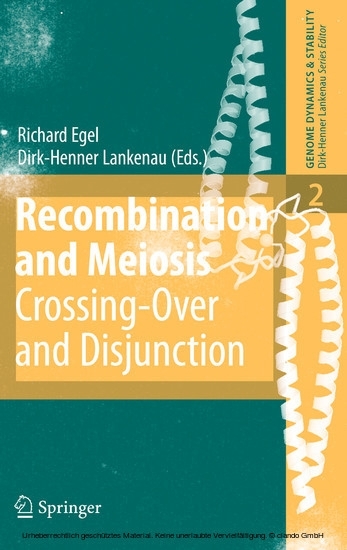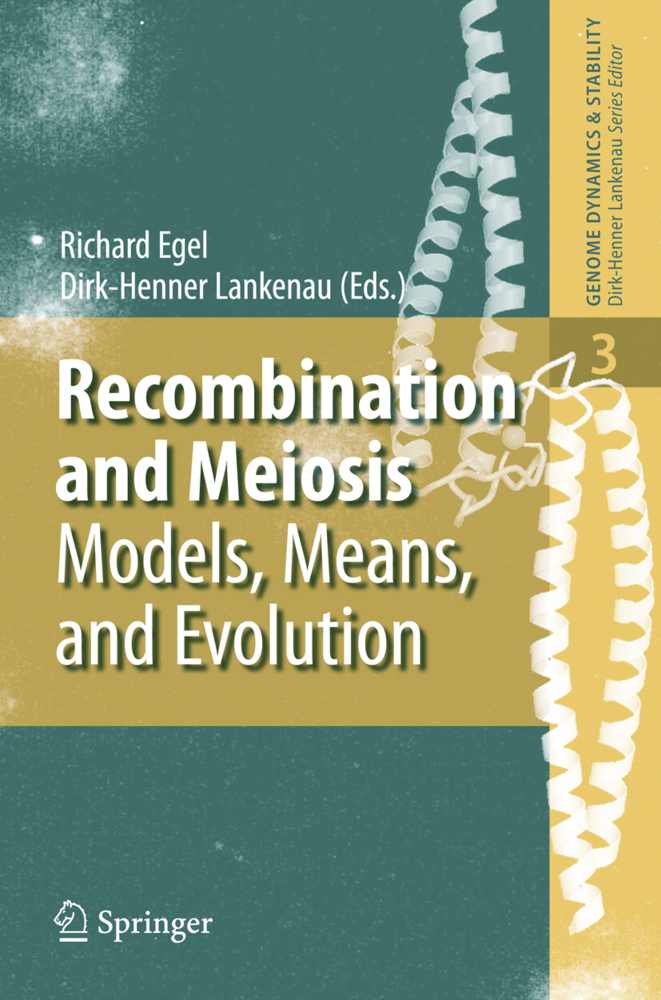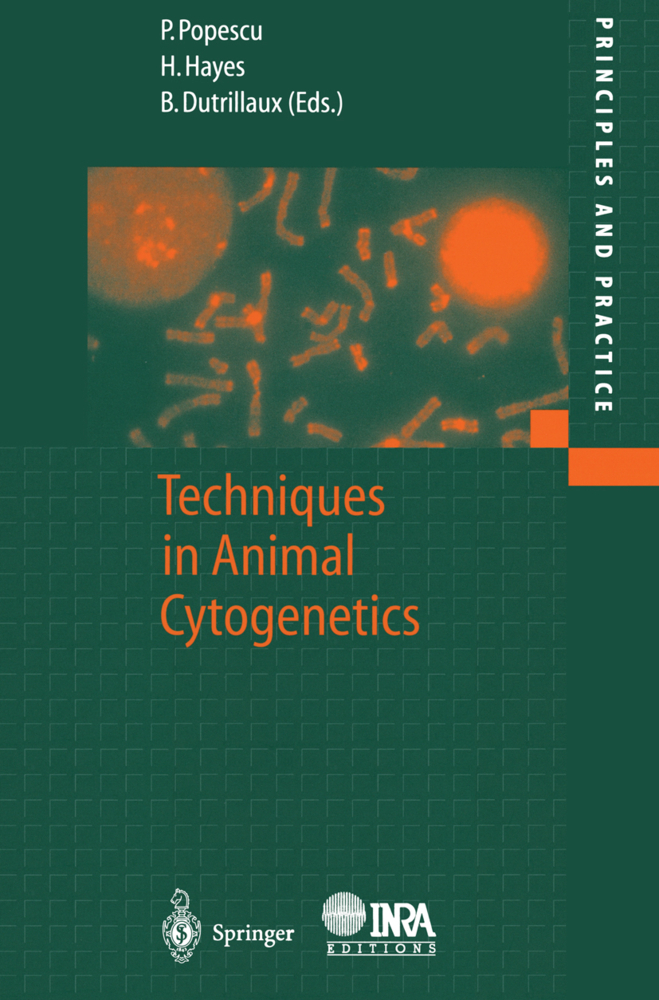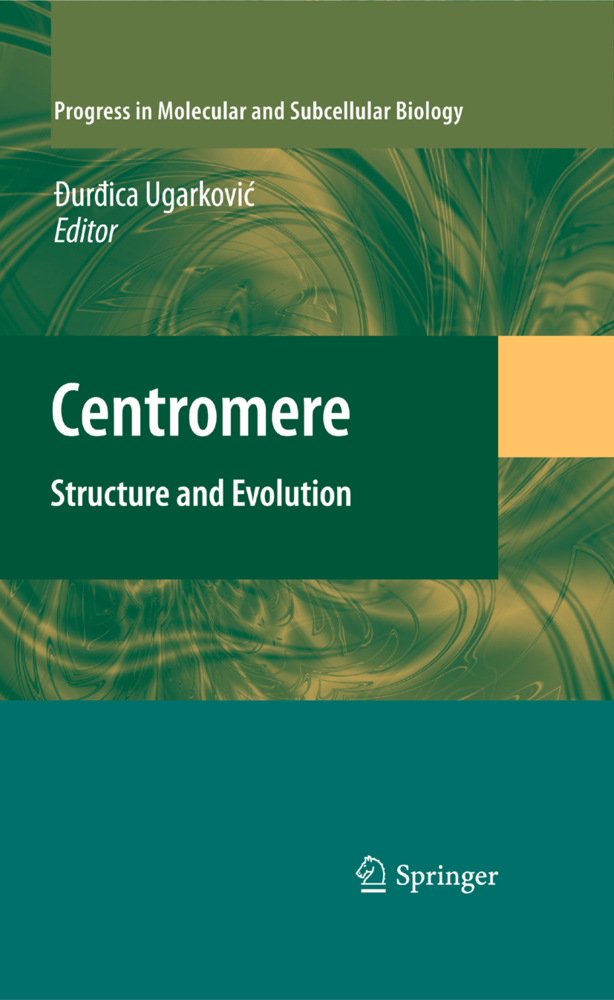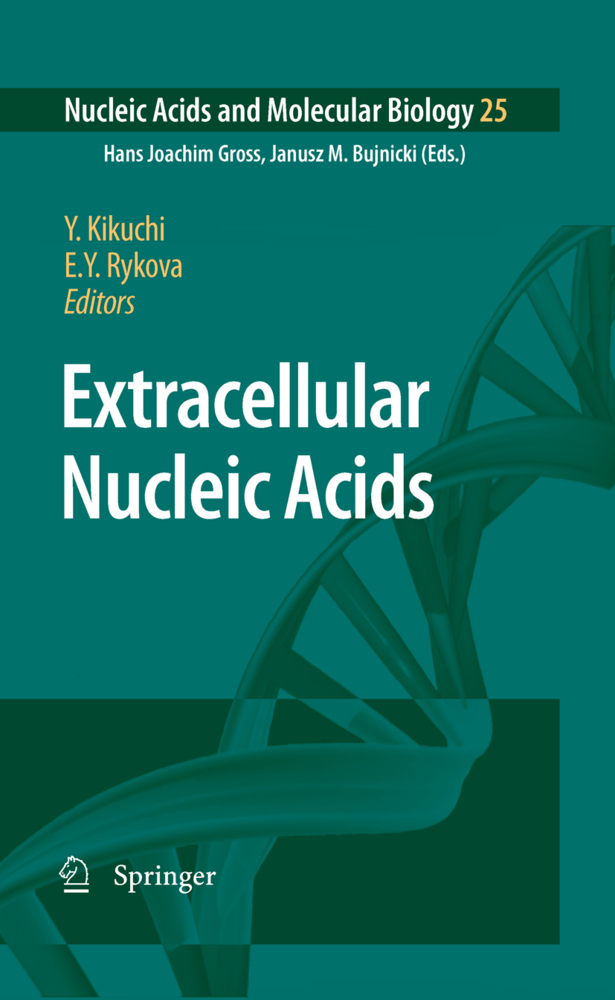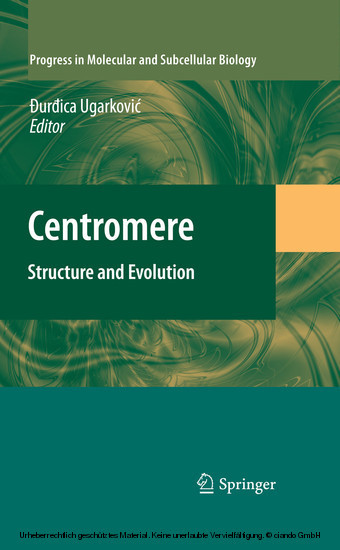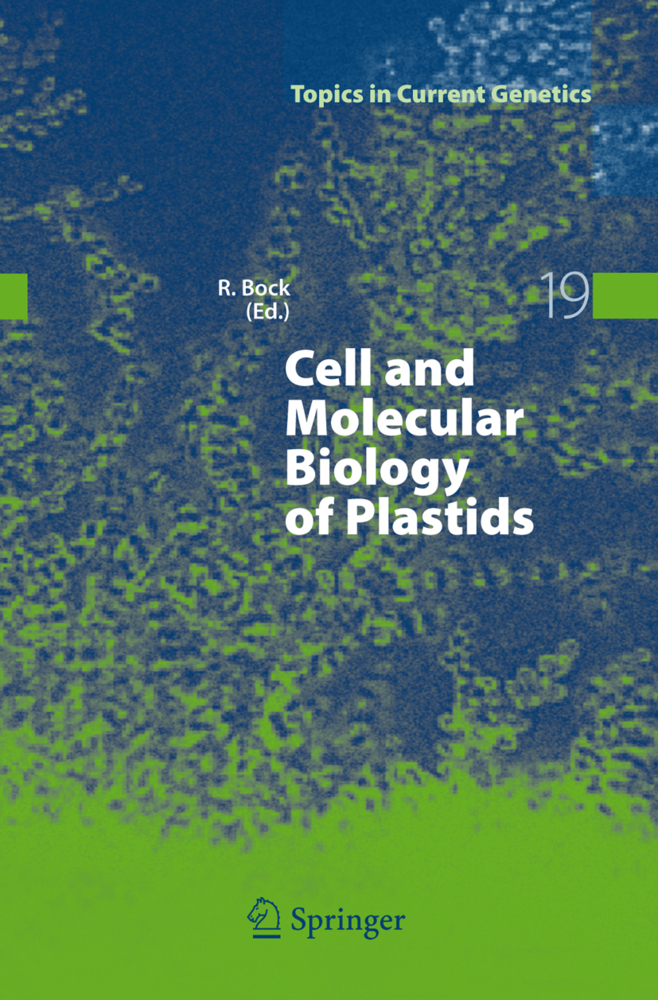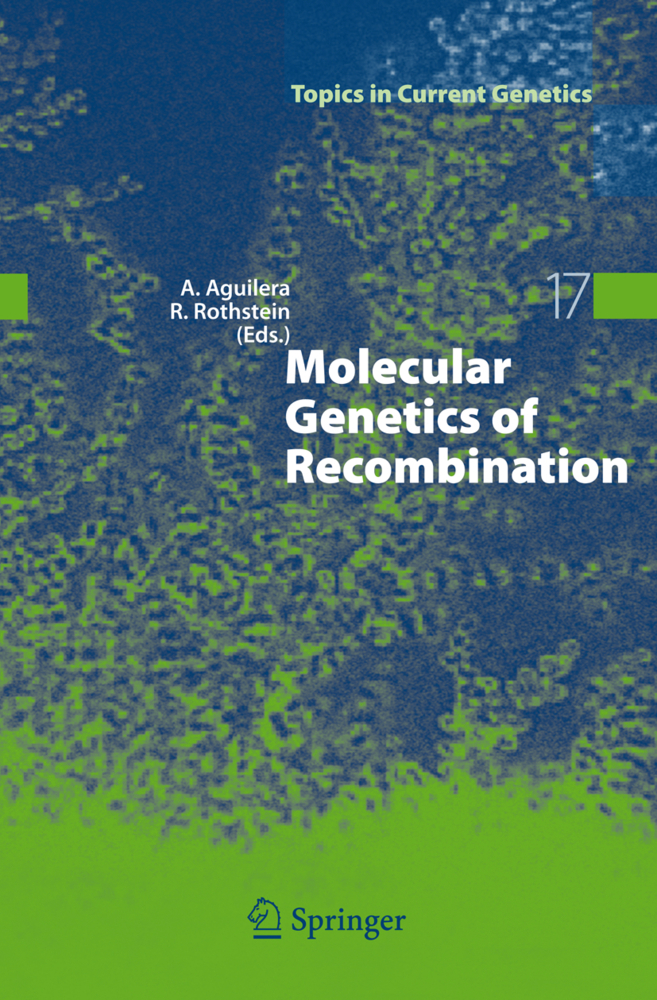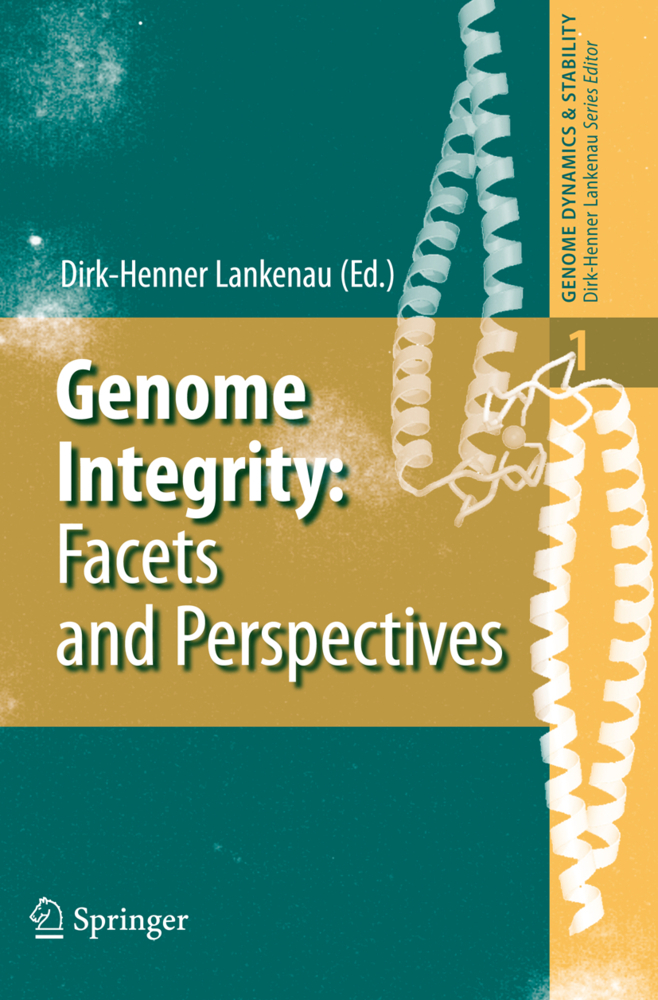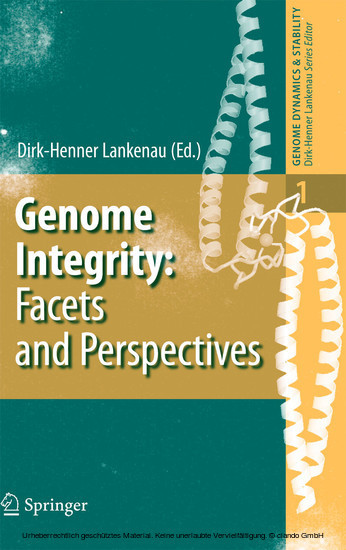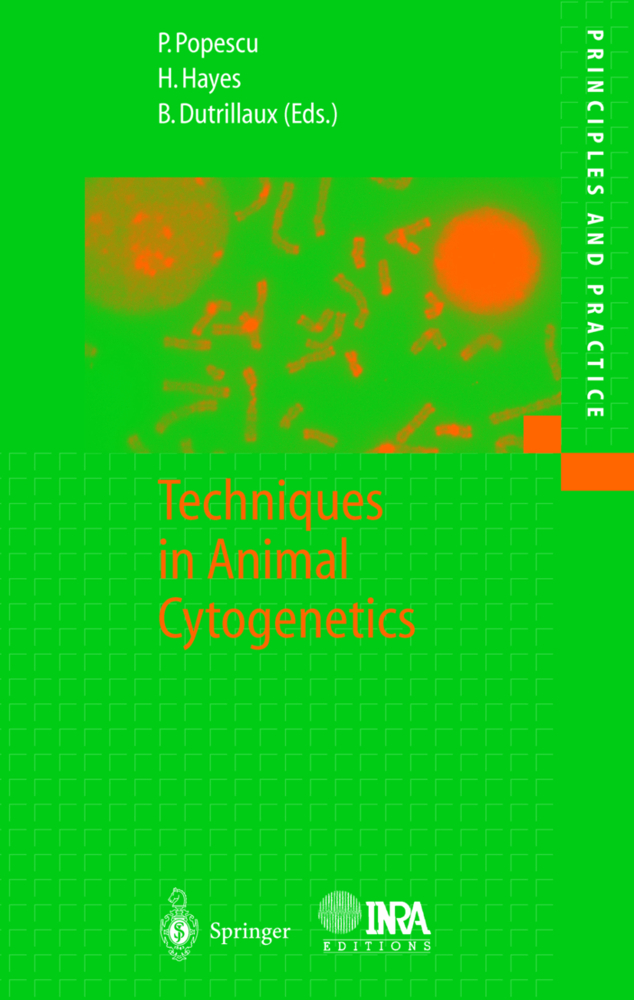Recombination and Meiosis
Crossing-Over and Disjunction
Once per life cycle, mitotic nuclear divisions are replaced by meiosis I and II reducing chromosome number from the diploid level to a haploid genome, reshuffling the homologous chromosomes by their centromeres, and recombining chromosome arms by crossing-over. In animals, including humans, all this happens during the germ cell formation of eggs and sperm. Due to the reign of meiosis, no child is a true genetic copy of either parent. Central to mainstream meiosis, the mechanisms of reciprocal exchange at crossover/chiasma sites stand out as a controlled program of biologically significant molecular changes. To initiate the meiotic exchange of DNA, surgical cuts are made as a form of calculated damage that is subsequently repaired by homologous recombination. These key events are accompanied by ancillary provisions at the level of chromosome core organization, sister chromatid cohesion, and differential centromere connectivity. Great progress has been made in recent years to further our understanding of these mechanisms. Questions still open primarily concern the placement of and mutual coordination between neighboring crossover events. The current book addresses these processes and mechanisms in multicellular eukaryotes, such as Drosophila, Arabidopsis, mice and humans. The pioneering model systems of yeasts, as well as evolutionary aspects, will be addressed in a forthcoming volume. This fascinating volume addresses the processes and mechanisms taking place in the cell during meiosis and recombination. It covers multicellular eukaryotes such as Drosophila, Arabidopsis, mice and humans. Once per life cycle, mitotic nuclear divisions are replaced by meiosis I and II reducing chromosome number from the diploid level to a haploid genome, reshuffling the homologous chromosomes by their centromeres, and recombining chromosome arms by crossing-over.
Sister Chromatid Cohesion and Centromere Organization in Meiosis
Spo11 and the Formation of DNA Double-Strand Breaks in Meiosis
Synapsis, Double-Strand Breaks, and Domains of Crossover Control in Drosophila Females
Synaptic and Recombination Nodules in Mammals: Structural Continuity with Shifting Protein Composition
Human Recombination Hotspots: Before and after the HapMap Project
Meiotic Nondisjunction the Major Cause of Trisomy 21
Meiosis in Arabidopis Thaliana: Recombination, Chromosome Organization and Meiotic Progression
Modified Cell Cycle Regulation in Meiosis.
Meiotic Crossing-over and Disjunction: Overt and Hidden Layers of Description and Control
Chromatid Cores, Meiotic Chromosome Structure and SegregationSister Chromatid Cohesion and Centromere Organization in Meiosis
Spo11 and the Formation of DNA Double-Strand Breaks in Meiosis
Synapsis, Double-Strand Breaks, and Domains of Crossover Control in Drosophila Females
Synaptic and Recombination Nodules in Mammals: Structural Continuity with Shifting Protein Composition
Human Recombination Hotspots: Before and after the HapMap Project
Meiotic Nondisjunction the Major Cause of Trisomy 21
Meiosis in Arabidopis Thaliana: Recombination, Chromosome Organization and Meiotic Progression
Modified Cell Cycle Regulation in Meiosis.
Egel, Richard
Lankenau, Dirk-Henner
| ISBN | 9783540753735 |
|---|---|
| Artikelnummer | 9783540753735 |
| Medientyp | E-Book - PDF |
| Auflage | 2. Aufl. |
| Copyrightjahr | 2007 |
| Verlag | Springer-Verlag |
| Umfang | 365 Seiten |
| Sprache | Englisch |
| Kopierschutz | Digitales Wasserzeichen |

